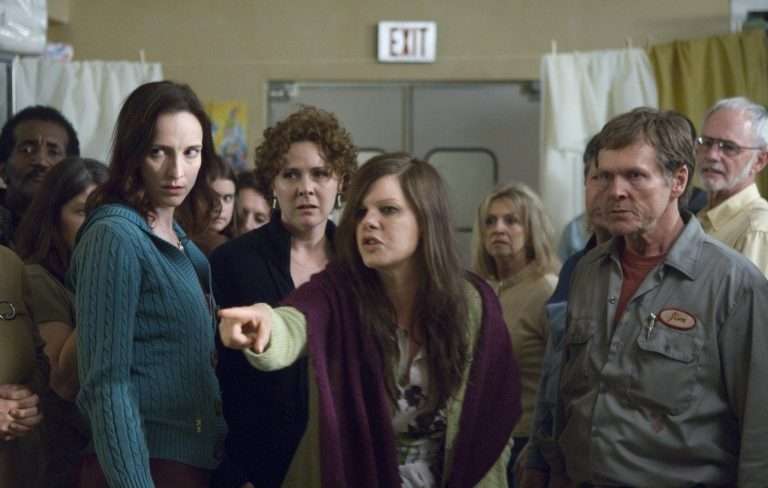In the quietly surreal world of “Ovary-Acting,” director Ida Melum and screenwriter Laura Jayne Tunbridge carve out a tiny stop-motion universe that is absurd and unflinchingly honest: a world in which Eva, a woman at her sister’s baby shower, ostensibly surrounded by pastel décor and cooing infants, suddenly gives birth to her own reproductive organs, and is compelled, in that grotesque yet brilliantly metaphorical twist, to name what she feels: desire, fear, autonomy, expectation.
Against the bubble-gum cheer of bunting and brochures for first-time motherhood, the hand-crafted puppets and saturated sets register a deeper unrest: Eva is suspended in a carnival of projection, each guest’s glance and each floral centrepiece serving as a reminder of the “when” she is meant to decide and the “if” she is even allowed to.
The moment her body begins its unsolicited performance, Melum anchors the film not in spectacle but in quiet revolt: the womb becomes a puppet, named “Ovy”, the voice of society shouting inside her with musical accompaniment, and Eva finds she must argue, with the absurd and the hyper-real, over what parenthood would cost her, what her body demands of her, and whether the desire to belong must always override the desire to choose.
In the twelve minutes of “Ovary‑Acting,” director Ida Melum folds together the overt cheer of domestic expectation and the acidic sting of internal dissent in a way that demands not just our ears but our discomfort. The baby shower setting, complete with pastel balloons and neatly arranged cupcakes, becomes a battleground: the game of guessing due dates becomes a trial March that our protagonist, Eva, did not volunteer for, but cannot escape.
Each question tossed her way, “When will you start your own family? ” “Isn’t it time? ” – all of this accumulates like a weight on her chest, and the animation cleverly literalises that weight when Eva’s belly swells, her body giving birth not to a baby but to her reproductive organs, embodied in the puppet figure Ovy.
Here, the bakery table, confetti, and tiny baby-shower hats are symbols of normative imperatives, dressing up the demand for motherhood in sugar and polite laughter even as they pull tighter the noose of expectation.
We see Eva shrink in the pastel carnival of maternal destiny – posture collapsing, her smile flickering, while Ovy, that monstrous mirror, pursues her through the mini-world constructed in stop-motion, forcing a confrontation: the self who is told to mother and the self who asks if this is her story at all.
And Melum doesn’t let the comedy dilute the tension: the gag of meeting your ovaries at a social function becomes a metaphor for how society’s body-scripts entangle with our own desires. When the baby-shower games morph into interrogation rounds, “Why don’t you want children? ” “Are you sure?” what’s at stake is not fertility alone, but identity, autonomy, freedom.
The garish colors of the puppet world contrast with Eva’s muted palette, visually marking her dissonance in the room. The camera lingers on the moment of her body’s uninvited performance – pain-filled push, the gasp, the reveal of Ovy, and there is no cheering, no relief; rather, we are held in the aftermath, in the half-smile of relief, in the searching look of “What next? ” There is no neat wrapping-up.

Ovy and Eva exit that shower not resolved but changed: the insistence of Ovy and the resistance of Eva settle into something like an uneasy truce, but the final frame leaves us listening to the echo of questions unanswered. This, for me, is the fiercest part of the film: how celebration can be coercion, how domestication of women is masquerading as care and cheer, and how the body itself may rebel when words fail.
It dares us to reconsider spaces we think are benign-housewives’ gatherings, pastel designs, baby-shower games-and to know that often in the quietest moments lie the sharpest edges. Of course, the scene plays its jokes, but it holds its mirror still and expects you to see not only Eva and Ovy but yourself in that reflection.
It elevates a reportedly banal social ritual into a crucible for autonomy and meaning, and in this compression reveals how small gestures (picking up a cupcake, answering a toast, looking away instead of smiling) are sculpted by a history of expectation and the weight of bodies primed to act or recoil. Eva suddenly giving birth to her own reproductive organs as a puppet named “Ovy” serves not only as a metaphor but as an indictment: that which is assumed as “natural” becomes, upon closer examination, anything but child-bearing, motherhood; what is termed “choice” reveals itself as obligation.
This turn invites one to consider the backdrop of the global landscape of reproductive rights: the reproductive justice framework underlines the fact that the right to have children, not have children, or to parent in safe environments is inalienable from economic security, racial equity, disability rights, and immigration status.
In the world of “Ovary-Acting,” the pastel-decorated shower becomes a site for such systems of control-party games, the constant hovering of “when will you have children”, the smile masking the impatience – all reflecting a cultural script in which women’s bodies are stakes in a social contract about the continuity of lineage, economic reproduction, and normative femininity.
Also Read: The 25 Best Animated Movies of All Time
The regulation of reproductive bodies has historically been a site of colonial, racial, and patriarchal power, from forced sterilizations and eugenics movements to witch-hunts in early modern Europe, where women with “deviant” bodies were scapegoated, to contemporary bans on abortion or restricted access to Assisted Reproductive Technology (ART). The film dialogues with these legacies by refusing the tidy binaries of “mother vs childless”. Eva does not just opt out; she erupts into visibility through Ovy and then has to negotiate what that eruption means for her, her family, her economy, and her body autonomy.
Economically, the pressure to reproduce is coupled with labor, care work, and future economic dependency. The movie subtly points toward the price placed on women’s time, childcare infrastructure, housing, and job security, through which decisions about having children are usually made, echoing global findings that financial constraints remain a major barrier to reproductive freedom.
Meanwhile, the political climate around reproductive rights amplifies the urgency of the film’s allegory: legislative backsliding, data-privacy threats via fertility apps, and renewed attempts to restrict access to abortion are turning the personal into the political. In that sense, Eva’s moment of revolt in “Ovary-Acting” is not isolated but emblematic of a broader condition in which women and gender-diverse people are compelled to perform parenthood, homemaking, and fertility under regimes of debt, surveillance, and shame.
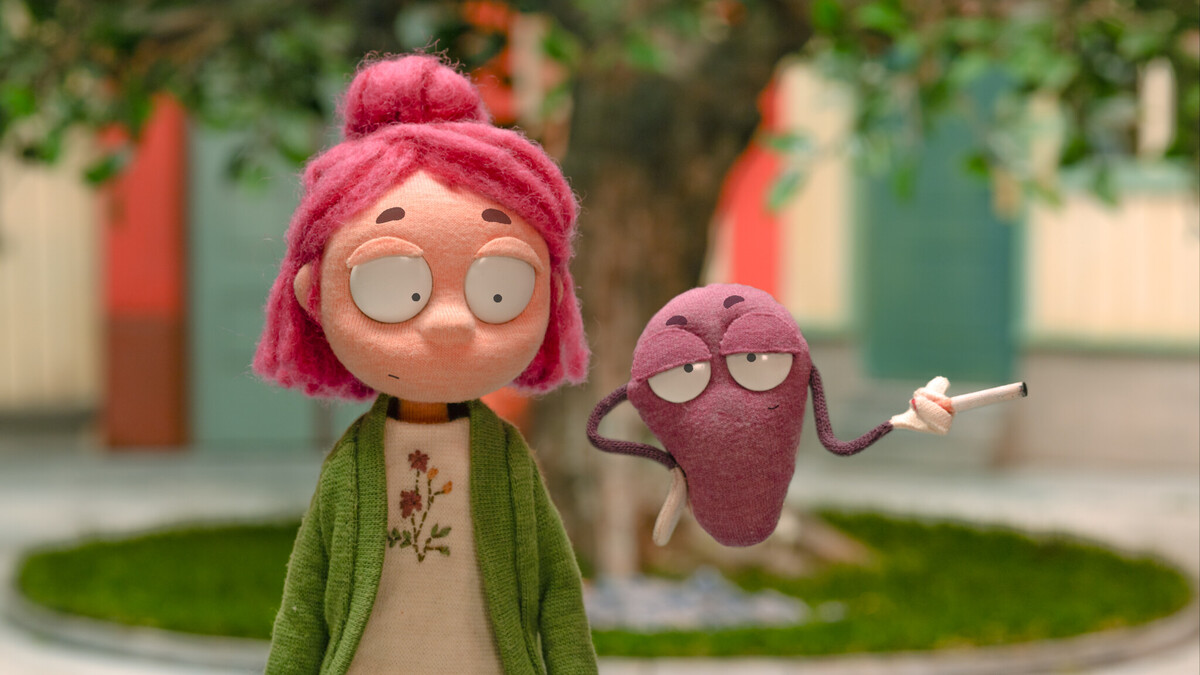
The hand-animated film – every fold of fabric, every tentative gesture, every swelling of the abdomen metamorphosing into womb-form – presents a tactile world in which the domestic and the monstrous sit side‐by‐side. Production designer Svein Erik Okstad’s miniature aesthetic plunges us into a paradigm where the baby-shower table morphs into a crucible of expectation and the cheerful décor becomes a stage for existential reckoning.
This is no benign celebration; here, the pastel bunting and cupcakes signal not joy but surveillance. The bakery table becomes a jury bench, the baby-shower games turn into rounds in a trial our protagonist, Eva, never volunteered for.
Melum allows puppetry to traverse both corporeal comedy and existential weight: the absurd image of a singing uterus is funny, yes, but it also pierces. It lays bare the cultural choreography around reproduction – the sister’s baby shower becomes a tribunal, the expectant mothers and well-intentioned aunties become a tidal wave of normative advice, Eva cannot swim or sink in without drowning a piece of herself. The visual texture underscores this conflict: bright whimsical puppets stand out against Eva’s muted tones, underscoring her dissonance; the camera lingers on the moment of swelling, the push, the reveal of Ovy not to shock but to compel recognition.
The objectivity of animation grants distance, yet the materiality of fabric, wood, and the puppeteer’s hand brings intimacy. What we witness is not childbirth but birth-right battle; not a celebration but an interrogation. This part of the film functions as parody, as symbolism, as visceral revolt. It forces you to watch not design but demand: what it demands of a woman, what it demands of her body, what it demands of her agency.
In the hands of Melum, this almost whimsical short becomes a sharp political device. It alarms us: the right to not have children, the right to decide when and how, the right to bodily sovereignty – these are not just personal issues but hinge on class, race, history, labor, and law.
The ending, where Eva walks out with Ovy in tow, carries no self-satisfied closure but instead a trembling question mark: what does freedom look like when the institution of motherhood stands at every door, and when reproduction remains the metric of worth?
“Ovary-Acting” isn’t just a quirky stop-motion short about fertility and baby showers. It’s a quietly ferocious statement about who gets to inhabit their body on their own terms and who gets passed the script of motherhood without a choice. When Eva walks into that pastel-ballooned space, puppet organs in wake, the film catapults us from sugar-coated expectation into the raw nerve of autonomy, and I found that act of turning a “celebration” into an interrogation to be its sharpest move.
What stays with me most is not the visual gimmick of Ovy the ovary but the hush that follows the moment of revolt, the breath held between games and questions, the camera lingering on Eva’s face when the laughter around her falters. In that silence, the tidal weight of social scripts – those unspoken demands baked into cake and bunting – that say: “You will bear children”, when the actual message should be: “You may decide if you will be”.
The film doesn’t comfort or hand out neat endings. Instead, it hands you a mirror angled slightly askew, so you see your own reflection in Eva, your own “when will you” hovering in someone else’s mouth. And that’s where its brilliance lies, not in solving or sermonizing but in making you feel the pressure of the question, see the architecture of expectation, hear the possibility of saying no.

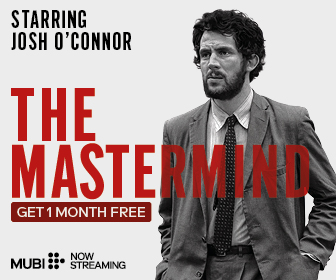


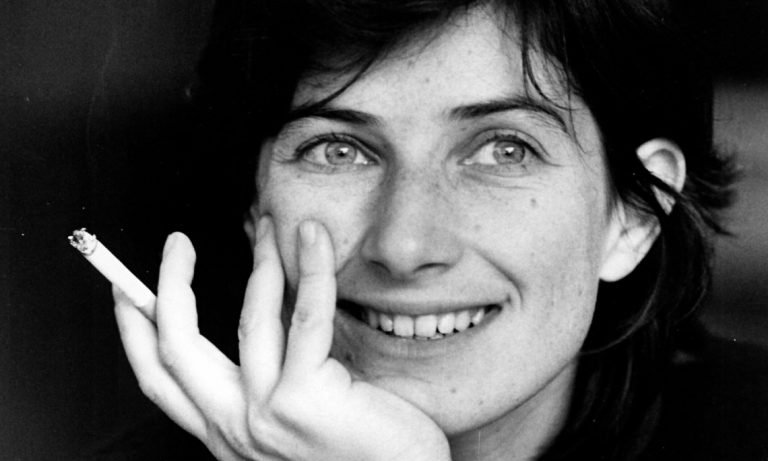
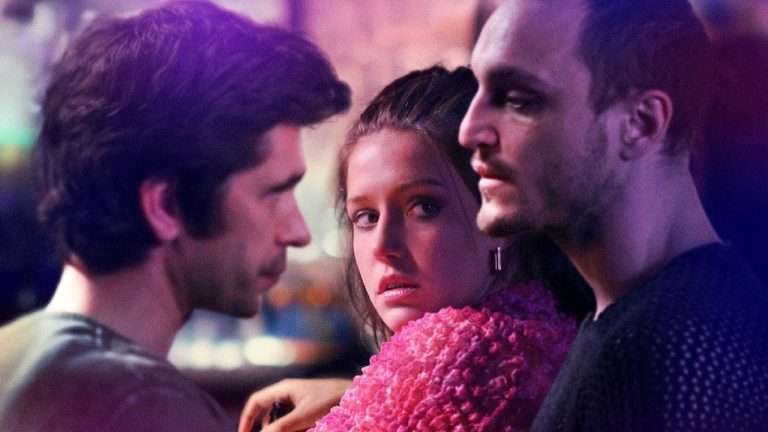

![Holler [2021] Review: A gritty drama about a resolute girl getting by](https://79468c92.delivery.rocketcdn.me/wp-content/uploads/2021/06/HOLLER-Still-1-768x528.jpg)
![Star Wars: The Force Awakens [2015]: A Pious Pilgrimage for Padawans](https://79468c92.delivery.rocketcdn.me/wp-content/uploads/2015/12/12404810_10153266670513837_739036233_o-1.jpg)
